|

Banko pottery – impressed oval seal mark that reads 萬古 ‘Banko’. Meiji, Taishō and later
See examples on eBay →
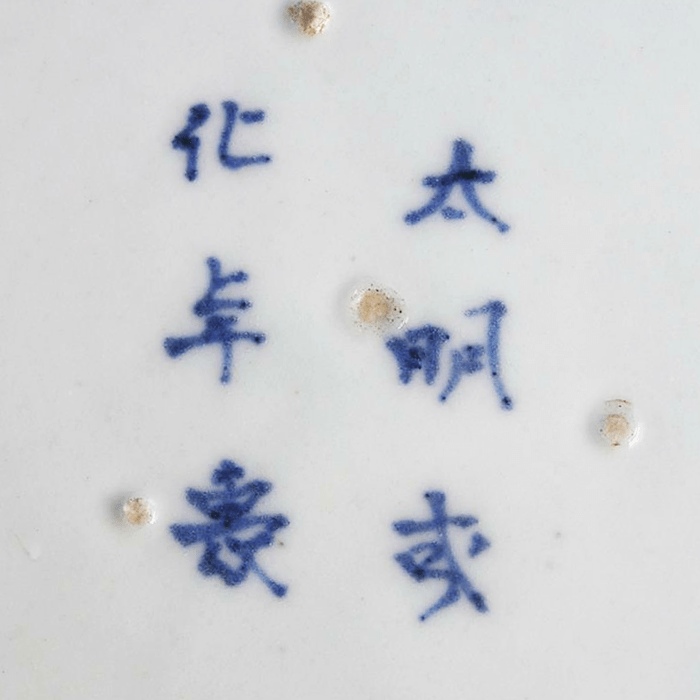
Chenghua – apocryphal Chinese style six-character Chenghua reign mark 太明成化年製 ‘Tai Ming Chenghua Nian Zhi’ or ‘Daimin seika nensei’ in Japanese. Often found on Imari Arita porcelain.
See examples on eBay →

Choshuzan – Satsuma pottery marked in gold on black background 長州山 ‘Choshuzan’, sometimes also just 長州 ‘Choshu’; Meiji period
See examples on eBay →

Choshuzan – satsuma style pottery inscribed 大日本 ‘Dai Nippon’ 長州山作 ‘Choshuzan saku’ 薩广国 實生院画 ‘Satsuma kuni Jissei-in ga’ 義定筆 ‘Yoshisada hitsu’ – Great Japan, Choshuzan workshop, painted by Jissei-in after a design by Yoshisada.
See examples on eBay →

Chozan – Satsuma pottery marked in gold on black background 亰都朝山 ‘Kyoto Chozan’ (alternative reading ‘Kyoto Asayama’); Meiji period
See examples on eBay →

Daikichi kiln – underglaze blue rectangular seven-character mark that reads 美濃国 大吉窯造 ‘Mino nokuni Daikichi gama zō’ – Mino province, Made by Daikichi kiln
See examples on eBay →

Fukagawa Koransha – orchid symbol (koransha meaning ‘orchid style’) used since 1870s (Meiji period) until today
See examples on eBay →

Fukagawa Seiji mark depicting Mt. Fuji and a river – used since the foundation of the company in 1894 and throughout the 20th century.
See examples on eBay →

Fukagawa Seiji – alternative mark with Mt. Fuji and inscribed ‘Fukagawa Sei’ 深川製 (made by Fukagawa). Early 20th century, Meiji – Taishō period
See examples on eBay →

Fuki-Chosun mark 冨貴長春 (wealth, nobility, longevity, and youth) – wish for good fortune and long life found on Imari porcelain. Meiji – Taishō period
See examples on eBay →

Fuku mark 福 (happiness or good fortune) found on Kutani porcelain and pottery. Used by various studios and decorators.
See examples on eBay →

Fuku 福 – another version of this mark, this time with yellow background. Found on Edo period Yoshidaya style Aode Kutani charger.
See examples on eBay →
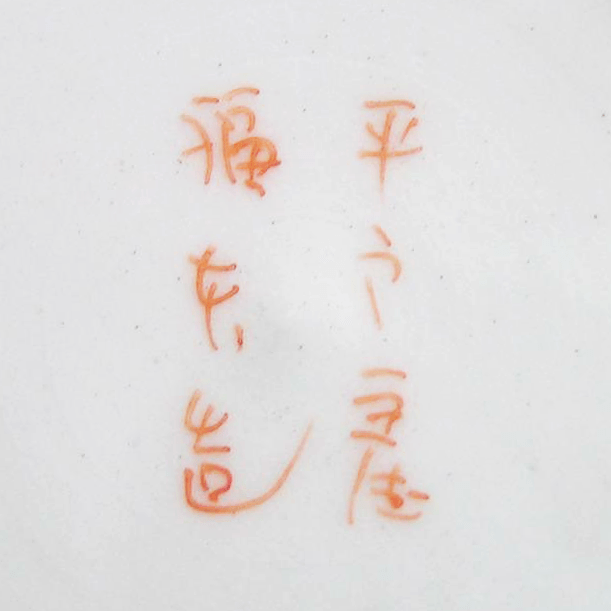
Fukumoto Eitarō (福本榮太郎) – Hirado porcelain marked 平戸産福本造 ‘Hirado-san Fukumoto-zō’ – Produced in Hirado by Fukumoto. Meiji Period
See examples on eBay →

Fuzan – miniature cobalt blue ground Satsuma vase marked ‘Fuzan’ 冨山. Meiji – Taishō period
See examples on eBay →

Genroku – Tominaga Genroku 富永源六 (1859-1920), founder of Genroku-yaki in Ureshino, Saga prefecture. Underglaze blue mark reads ‘Genroku sei’ 源六製 (Made by Genroku).
See examples on eBay →

Gyozan – Okada Gyōzan 岡田曉山 – mark found on Kenzan style pottery. Also produced Ninsei style pieces and other Kyoto Satsuma ware. Early 20th century.
See examples on eBay →

Hattori – fine quality Satsuma pottery marked 服部之造; late 19th – early 20th c., Meiji period
See examples on eBay →

Hichozan Shinpo – Arita Imari decorated porcelain marked ‘Hichōzan Shinpo zō’ 肥碟山信甫造; Edo-Meiji period; see also Tashiro Monzaemon below
See examples on eBay →

Higashi Fujiaki (東富士明, b. 1928) – Kutani porcelain with sqaure mark on a blue-green background that reads 九谷 富士明 ; 20th century


Hododa – Satsuma pottery mark ‘Satsuma Hododa’ 薩广 保土田 where 薩广 is simplified 薩摩; Meiji period
See examples on eBay →

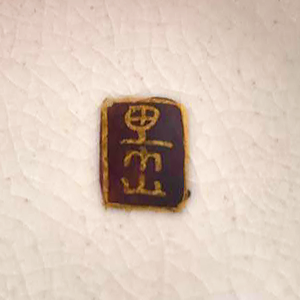
Ichizan – Satsuma pottery marked ‘Ichizan’ 市山 and with Shimazu clan mon above. Taishō period
See examples on eBay →

Imaemon – Imaizumi Imaemon 今泉今右衛門 – Nabeshima (Iro-Nabeshima) porcelain marked イマエモン ‘Imaemon’ (今右衛門); produced since mid-17th century, Edo period until present day (Imaizumi Imaemon XIV)
See examples on eBay →


Ishiguro Koko 石黒香々 – Sumida Gawa pottery with underglaze impressed mark 香二 inside a double gourd; sometimes incorrectly translated as Ban-ni; early 20th century
See examples on eBay →




Kaburaki – alternative mark that reads 加賀 九谷 鏑木製造 ‘Kaga (former province) Kutani, Made by Kaburaki’
See examples on eBay →

Kachoken – Kutani porcelain marked with nine-character iron red mark 大日本九谷華暢軒製 (Great Japan Kutani, Made by Kachoken) – often appears on works by Haruna Shigeharu (1847-1914); Meiji period
See examples on eBay →

Kaizan – stylized Satsuma pottery mark on black background inside a double gold border. Reads ‘Kaizan Sei’ 介山製 (Made by Kaizan); Meiji period
See examples on eBay →

Kakiemon – this example of underglaze blue Kakiemon porcelain mark is by Sakaida Kakiemon XII (十二代 酒井田柿右衛門, 1878-1963), but very similar marks were also used by later generations.
See examples on eBay →

Kato Shubei II (1848-1903) – Seto ware mark that reads 白云堂 周兵制 ‘Hakuundo Shubei’; Meiji period
See examples on eBay →

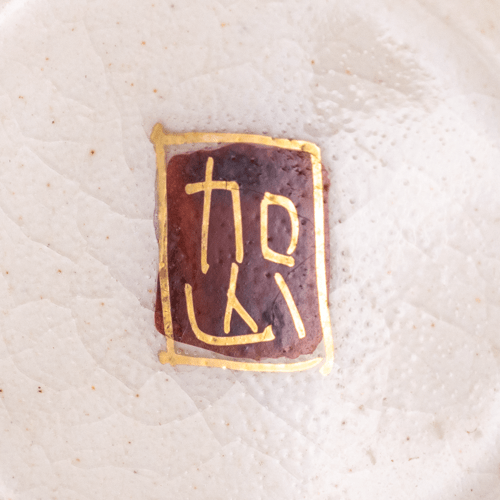

Ken or ‘Qian’ 乾 underglaze blue mark in Chinese zhuanshu seal script, generally assumed to stand for emperor Qianlong (乾隆)
See examples on eBay →


Kinkozan – another version of the satsuma mark above that simply reads ‘Kinkozan’ 錦光山. Appearance of Kinkozan studio mark can vary greatly based on the decorator and quality of the piece. Early 20th century.
See examples on eBay →


Kioken Heyza – six-character underglaze blue mark on Seto porcelain that reads 其王軒平左製 ‘Kioken Heyza sei’; Meiji period
See examples on eBay →
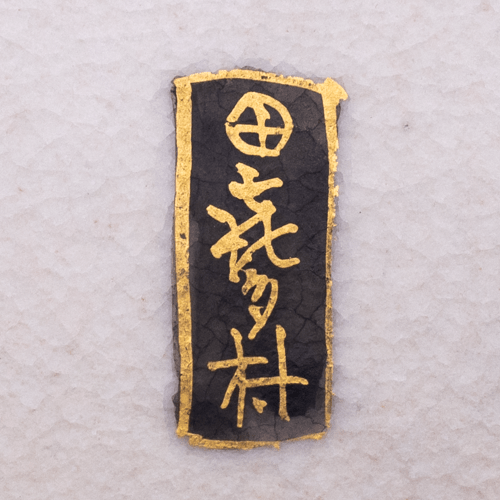
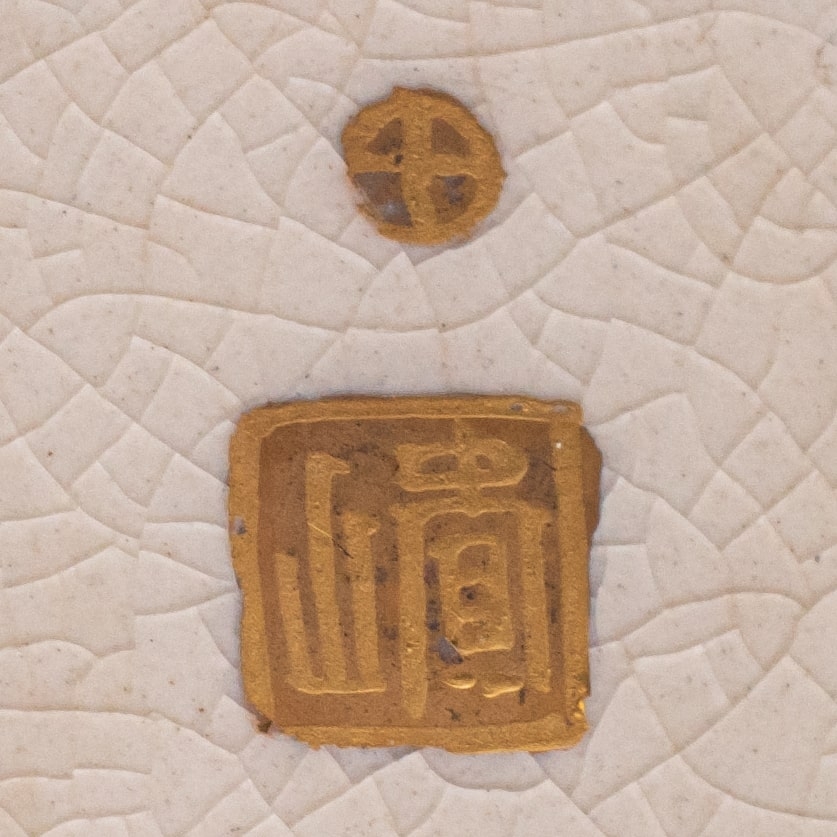

Kizan – alternative rectangular Satsuma mark written as 竒山 ‘Kizan’; Meiji – Taishō period
See examples on eBay →

Kizan – rectangular gold mark on iron red background and with Shimazu crest above. 岐山 – Kizan or Gizan; Meiji period Satsuma pottery
See examples on eBay →
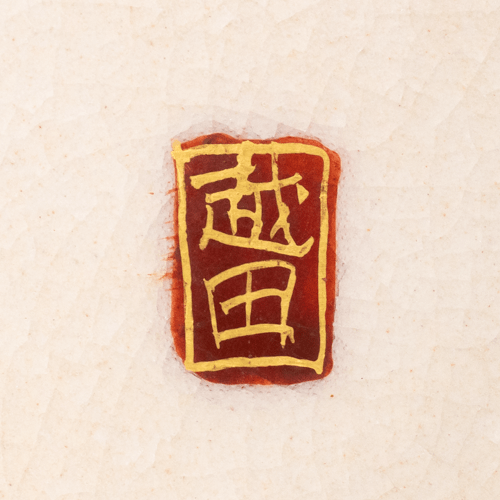
Koshida – rectangular gold mark 越田 on iron red background; early 20th century Satsuma pottery
See examples on eBay →

Kouraku kiln – modern Japanese porcelain marked 幸樂窯 ‘Kouraku gama’ with impressed stamp underneath
See examples on eBay →



Kusube – alternative “Kusube” 楠部 Satsuma mark in iron red either by Kusube Sennosuke or his son Kusube Yaichi (1897-1984). Often accompanied by stamped FOREIGN export mark; Taishō period
See examples on eBay →
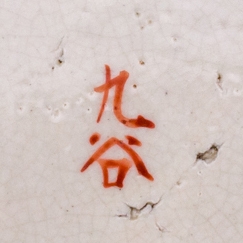

Kutani 九谷 – underglaze blue Kutani mark written in stylized script and inside a double square border
See examples on eBay →

Kutani – another version of generic Kutani red mark that reads 九谷製 ‘Kutani-sei’ (Made in Kutani)
See examples on eBay →
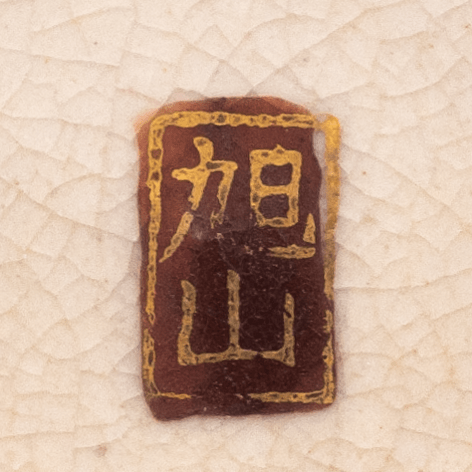

Meigyoku – gilt Satsuma pottery mark on black backround that reads 大日本 薩摩製 明玉画 ‘Dai Nippon, Satsuma Sei, Meigyoku Ga’ (Great Japan, Satsuma-made, painted by Meigyoku) and with Shimazu crest above; Meiji period
See examples on eBay →

Meigyokuzan – fine quality Satsuma pottery with gilt rectangular mark on blue backround that reads 大日本 明玉山 ‘Dai Nippon, Meigyokuzan’ (Great Japan, Meigyokuzan) and with Shimazu crest above; Meiji period
See examples on eBay →

Miyagawa ‘Makuzu’ Kozan – 宮川香山 – underglaze blue mark that reads 真葛香山製 ‘Made by Makuzu Kozan’. There were four generations that used this mark throughout the first half of the 20th century – Makuzu Kozan I-IV.
See examples on eBay →


Momota – alternative 百田造 ‘Momota Zo’ Kutani porcelain mark inside a black fan-shaped background with gold border. Written from right to left. Early 20th century.
See examples on eBay →

Nakamura Shuto I (1864-1928) – Kutani porcelain marked 日本橫濱中村造之 ‘Nippon Yokohama Nakamura Zo Kore’. Taishō period
See examples on eBay →


Nikkozan – Satsuma pottery signed ‘Nikkozan’ 日光山 – gold rectangular mark on black background with red Shimazu crest above; early 20th century
See examples on eBay →
Nishimura Saichi 西村佐一 – Kutani porcelain iron red mark 加賀 綿野製 西村佐一描 ‘Kaga, Made by Watano, Painted by Nishimura Saichi’; Meiji period
See examples on eBay →

Ryozan – early 20th century Meiji-Taishō period Satsuma pottery with Shimazu crest and rectangular ‘Ryozan’ 亮山 mark
See examples on eBay →

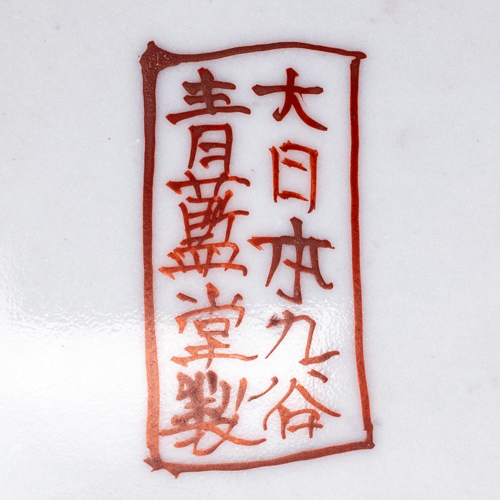
Seirando – iron red rectangular mark that reads 大日本九谷 青藍堂製 ‘Great Japan, Kutani, Made by Seirando’. Seirando was studio in Kobe founded by Kawajiri Kihei. 19th century, Meiji period
See exampleson eBay →



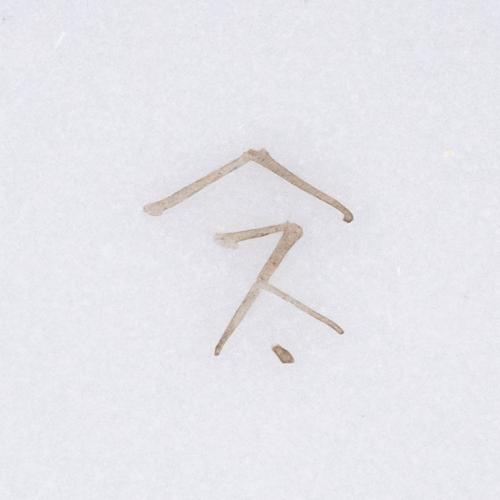
Suzuki Company – logo of this distributor is most often found in its printed form on post-WWII export pieces (sometimes also with the name 铃木 ‘Suzuki’ printed below). However, this handwritten version was found on a fully hand-painted pre-WWII tea set.
See examples on eBay →
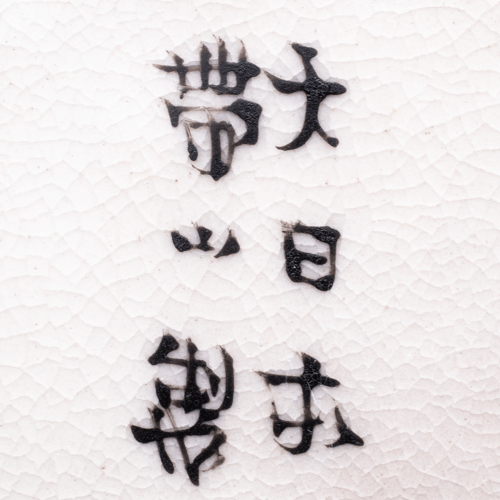
Taizan Yohei 帯山与兵衛 – Kachō-ga style satsuma pottery marked 大日本 帯山製 (Great Japan, Made by Taizan) in black overglaze enamel. Meiji – early Taisho era
Seeexamples on eBay →

Takahashi Dohachi IV – 四代 高橋道八 – pseudonym Kachutei – porcelain marked 華中亭道八製 ‘Kachutei Dohachi Sei’. Kyo yaki / kiyomizu-ware studio since Edo period. Fourth generation Takahashi Dohachi succeeded his father in 1874.
See examples on eBay →

Takayama – iron red Kutani mark that reads 高山画 ‘Takayama-ga’ (painted by Takayama); early 20th century
See examples on eBay →

Takeuchi Chubei – patent numbers such as this one are characteristic for porcelain (and metalware) by Takeuchi Chubei. This example is in underglaze blue but more commonly they are written in overglaze black or red enamels, often accompanied by artists name 竹内忠兵衛 and inscription 許特賣專 “exclusive sales permit” or “licensed patent dealer”; Meiji – Taishō period
See examples on eBay →

Takeuchi Chubei – more characteristic form of the patent mark shown above – this example is in overglaze black enamel; Meiji – Taishō period
See examples on eBay →

Tamamura Shogetsu 玉村松月 – Hagi ware (萩焼, Hagi-yaki) stamped 松月 ‘Shogetsu’ inside double circles. 20th century
See examples on eBay →

Taniguchi – porcelain marked 九谷 谷口製 ‘Kutani Taniguchi Sei’ – made by Kichijiro Taniguchi. Company active between 1875 and 1954.
See examples on eBay →

Tashiro – rectangular iron red and gilt mark that reads 大日本 九谷 田代造 ‘Great Japan, Kutani, Made by Tashiro. Early 20th century
See examples on eBay →

Tashiro Monzaemon (1816-1900) – underglaze blue mark ‘Dai Nippon Hichōzan Shinpo zō’ 大日本 肥碟山信甫造
See examples on eBay →

Toritei – iron red mark on Awata ware Satsuma pottery that reads ‘Toritei Zo’ 東籬亭造 – Made by Toritei; Meiji Period
See examples on eBay→

Uchida Kutani porcelain marked “Kutani Uchita Sei” 九谷 打田製


Uzu-fuku (also uzufuku or uzu-huku) 渦福 – mark found on Kakiemon and other Arita porcelain examples. Edo period
See examples on eBay →

Wanli – apocryphal Chinese six character Wanli reign mark in underglaze blue within double circles; reads 大明萬曆年製 ‘Dai Min manreki nensei’ in Kanji; found on Edo and Meiji period Arita Imari examples
See examples on eBay →


Watano – alternative Kutani mark with name written as 綿埜製 dating to the period of Watano Genuemon (綿野 源右衛門), late 19th century
See examples on eBay →

Wataya – Kutani porcelain marked 九谷造綿谷製 ‘Kutani Zo Wataya Sei’ – Kutani Made by Wataya – probably Wataya Heibei (綿谷平兵衛), Meiji Period
See examples on eBay →



Yojibe Hisatomi – iron red six-character mark that reads 蔵春亭三保造 ‘Zoshuntei Sanpo Zo’; late Edo period
See examples on eBay →
|